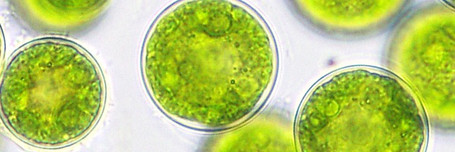
The definition of microalgae summarises microorganisms which can perform photosynthesis. However, some (partly major) differentiations must still be made beneath this collective term.
For instance, the cellular structure of the green algae (lat. Chlorophyta) largely corresponds to plant cells, while blue algae (lat. Cyanophyceae) are bacteria and are termed cyanobacteria.
A third family of microalgae, the red algae (lat. Rhodophyta), lies between green and red algae. They receive their characteristic red colouration from additionally contained colour pigments.
Another group consists of the diatoms, which differ from their relatives in that their shell is strengthened by silicium dioxide.
On this page, we would like to introduce you to some representatives of the microalgae with some possible applications which are already performed today.
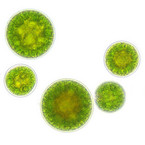 |
|
| Section: Green algae | |
| Genus: Haematococcus | |
| Species: pluvialis | |
| Use: Aquaculture, astaxanthin | |
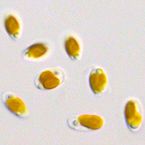 |
|
| Section: Diatoms | |
| Genus: Phaeodactylum | |
| Species: tricornutum | |
| Use: Food supplement, DHA, EPA | |
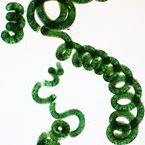 |
|
| Section: Cyanobacteria | |
| Genus: Arthrospira (ex. Spirulina) | |
| Species: platensis | |
| Use: Food supplements, fine chemicals, animal feed | |
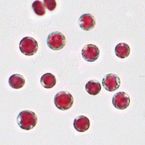 |
|
| Section: Red algae | |
| Genus: Porphyridium | |
| Species: purpureum (ex. cruentum) | |
| Use: Cosmetics | |






